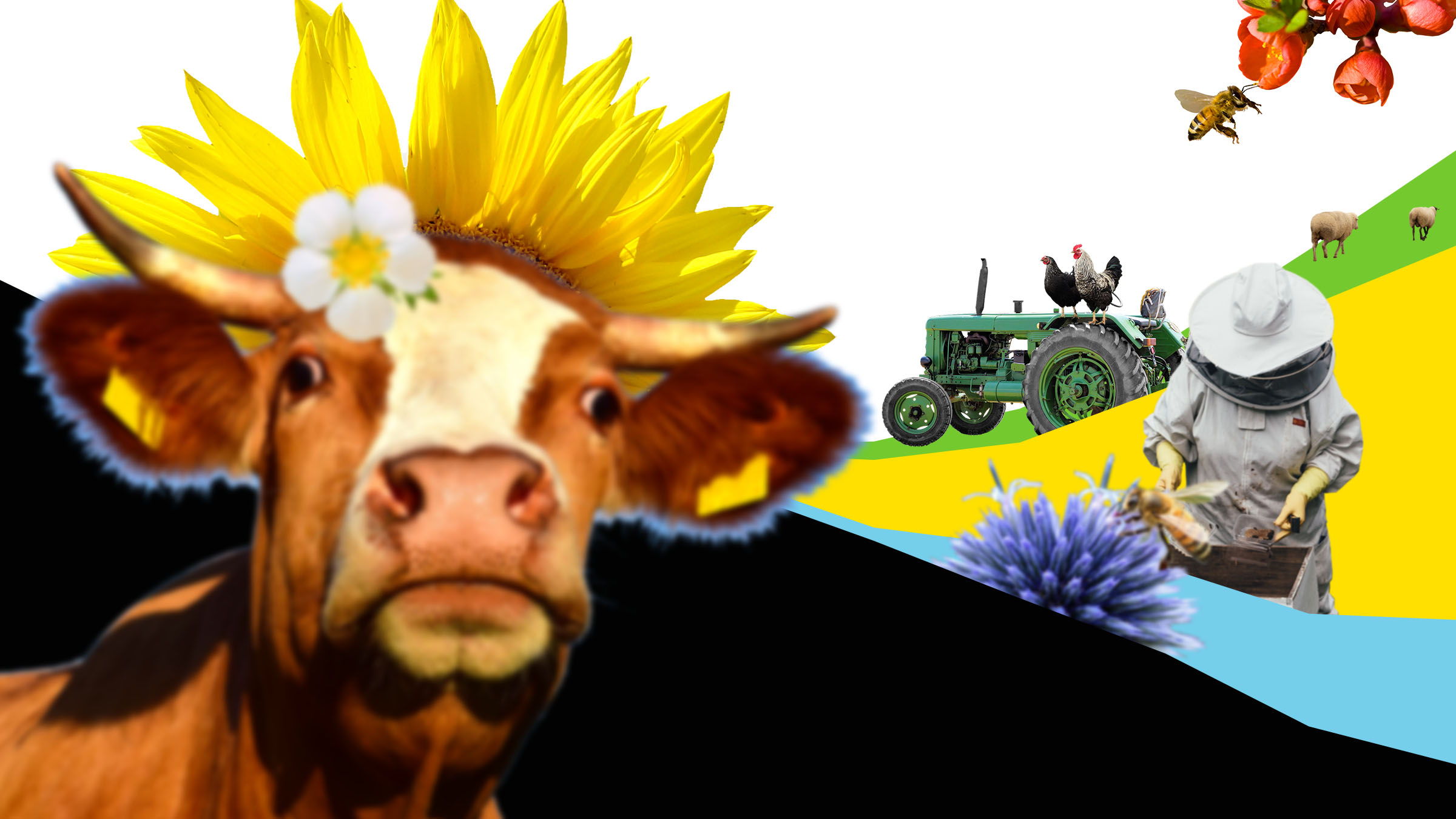Halting biodiversity loss has rapidly become a global priority. While public perceptions of this crisis do not yet match the alarm of climate change, addressing the human drivers of ecological collapse is increasingly high on the agenda of politicians, business leaders and citizens who are suddenly realising the planetary costs of delay. The IPBES Global Assessment report concluded that one million species are at risk of extinction globally and that urgent responses to reverse the loss of the natural world must be implemented.
While biodiversity underpins all life on earth, this fact alone has so far failed to stop the collapse in nature globally.
Yet there are pathways to avoid a point of no return. Leading scientists have shown that stemming the loss in biodiversity is possible but requires deep changes in the way resources are used and protected. Seminal modelling work has shown that “bending the curve” of terrestrial biodiversity decline and reversing losses by 2050 are possible. This requires, however, transformative conservation and restoration efforts. More than that, it also requires a major rethink of the economy, parts of which need pulling away from ecologically damaging practices in today’s linear economy. We need a shift towards a circular economy and a profound change in how we produce, consume and manage materials.
The question facing us is whether and, if so how, an economic system that has delivered material prosperity to many but has driven unprecedented destruction of the natural world can act in conjunction with nature, rather than against it. Measured in money, as much as USD$44 trillion – more than half of global GDP – is moderately or highly dependent on nature. Every year the world is losing more than USD$5 trillion in ecosystem services, which for example purify air and water and help provide our food. Continued prosperity depends on whether the sectors that most impact and depend on biodiversity can effectively align with biodiversity. No other route is viable in the long term.
The Finnish Innovation Fund Sitra and Vivid Economics are working to understand whether a transition to a circular economy can be aligned with the needs of a planet in peril. It is now in the middle of the project called Circular economy solutions for halting biodiversity loss, the full results of which will be released in early 2022. The study – the first of its kind – will examine the circular economy and biodiversity together and quantify the extent to which the circular economy can be part of the planet’s first aid kit.
How the circular economy and biodiversity are related
The concept of the circular economy has entered the mainstream and gained traction among businesses, many of which are publishing circular economy initiatives to use resources better and in a less damaging way. The advancement of policies at municipal, national and supranational levels, including the European Union’s Circular economy action plan, have helped cement the circular economy as a potential solution.
But what is the circular economy and how does it relate to biodiversity?
Despite, or rather because of the accelerating interest in the circular economy, there is no widely accepted definition of the concept. We highlight those definitions which bring out how the circular economy learns from nature and is built on a complex interplay with it. We conducted a thorough review to synthesise a growing set of options, including those presented by the Ellen MacArthur Foundation’s study The Nature Imperative: How the circular economy tackles biodiversity loss.
In other words, in this study, the circular economy is understood as “a systemic approach to production, consumption and materials management that facilitates regeneration and maximises both value and use. It prioritises non-toxic, renewable resources and minimises waste by closing resource flows. This approach reduces the environmental pressures of resource extraction, production, consumption and waste to benefit habitats, species and genetic diversity.”
What does this mean for the potential for the circular economy to help stem the loss in biodiversity? On the one hand, it could bring benefits to biodiversity by complementing conservation and restoration efforts – which are crucial but insufficient on their own. It could contribute to more sustainable production, consumption and materials management, climate mitigation efforts, reduced land use (by, for example reducing food waste and the use of landfills) or reduced pollution.
On the other hand, circular economy interventions could also lead to a number of geographical and sectoral spillovers and trade-offs unless accounted for. These may include, for example, use of renewable materials resulting in additional land use pressures (such as bio-plastics or timber use in the construction sector) if these activities expand into areas not previously under production. Also, if not designed out, economic rebound effects may negate some of the initial resource use and consumption savings from certain business models commonly labelled as circular. Therefore, to set a clear course for the future, we need to understand how these various factors interlink.
The following sections set out how the project team is solving this problem.
The four sectors most critical for capturing the potential of the circular economy for biodiversity
As with the climate crisis, there are a small number of sectors that contribute more than others to driving biodiversity loss. Similarly, there are also sectors with the largest scope for stemming loss, both because they are currently damaging and because a raft of potential solutions are available.
By first conducting a meta-analysis of findings of leading global studies on addressing biodiversity loss, we identified which sectors are driving the most biodiversity loss. We also categorised sectors according to the possibilities of employing circular solutions. This was done by examining their resource intensity and mapping out each sector’s value chain to understand the range of circular levers that can reduce harm to biodiversity. For instance, in the food and agriculture sector this means understanding the levers available to farmers for reducing biodiversity impacts at the production stage, through to alternative sources of protein available to consumers at the retail stage.
We found there is broad alignment on what sectors have the largest terrestrial biodiversity impact and potential for transitioning to a circular economy. Four sectors are identified as those that need the most attention:
- Food & agriculture
- Forestry, pulp & paper
- Buildings & construction
- Fibre production & textiles
These four sectors cover 60% of the mean-species abundance loss by 2050 as assessed by PBL Netherlands Environmental Assessment Agency. According to World Economic Forum analysis, these sectors capture just under 80% of the species that are threatened or near-threatened by business activities.
Modelling the impact of the circular economy on biodiversity loss
Our aim is to understand how much of the required action to stem biodiversity loss can be delivered by a global economy that is largely circular in nature by 2050. To do this, we employ a state-of-the-art linked land-use and biodiversity model. MAgPIE is a global, open-source model designed to explore land use dynamics in the context of global environmental policies. Our focus is confined to terrestrial (land-based) biodiversity loss due to the lack of integrated modelling frameworks to model freshwater and marine biodiversity impacts at the global scale.
Case study: food and agriculture
Our first phase of modelling aims to understand how a transformation of the food sector could stem biodiversity loss. This sector has the largest impact on the terrestrial biodiversity footprint of any sector globally. According to our findings, its effects on biodiversity are so large in particular because:
- The expansion of agricultural land comes at the expense of other ecosystems – nearly two-thirds of species, 62%, are threatened by agriculture and aquaculture.
- Half of habitable land is used for agriculture, with three quarters of that land used to farm livestock for meat and dairy production. Yet meat and dairy contribute respectively 18 and 37% of the global calorie and protein supply, whereas plant-based food contributes to 82 and 63% of the world’s calories and proteins. 42 million hectares of forest lost in recent decades have been converted to cattle ranching areas in Latin America, and around 7.5 million hectares to plantations in Southeast Asia.
- Over one-third of food is wasted globally (WWF, 2021) highlighting a fundamental mismatch between production and consumption in the sector, as well as many opportunities to reduce waste from farm to fork.
- Regenerative agriculture practices, which aim to preserve soil health and work in harmony with biodiversity, are currently only used to some extent on 20% of global cropland.
A circular food and agriculture sector
There are three categories of options available to create a more circular food sector that is less damaging to biodiversity:
- The use of alternative proteins in human and livestock to diversify diets, including the increased use of meat and dairy alternatives.
- Waste and loss reductions across the supply chain, including use of post-production waste and reductions in household food waste.
- Regenerative agriculture techniques that increase biodiversity footprints on land, including through improved nitrogen and water efficiency and practices that help rebuild soils and diversity.
As such, these specific levers create a vision of a circular food and agriculture system by 2050 which minimises food losses and pollution across the supply chain, increases the efficiency of production to reduce input requirements, and uses sustainable methods of cultivation that restore natural systems. These practices reduce agriculture’s negative impact on biodiversity, opening up more land for natural ecosystems, and actively contributes to increasing biodiversity in cultivated areas.
This contrasts with the “business as usual” narrative where historic linear production and consumption systems persist, resulting in substantial increases in material consumption as the world’s population grows and incomes rise, while food production both expands in area and relies on increasingly intensive production methods to feed a growing and increasingly affluent population.
A circular food and agriculture sector could stem and reverse this century’s global biodiversity loss by 2050
Our preliminary results suggest that a circular food and agriculture sector could stem and reverse the 21st century’s global biodiversity losses by 2050. To do this, the sector requires a transformation involving several levers available to farmers, consumers and businesses. The results paint a picture of how this transformation could be achieved. Reducing waste and loss is important but does not by itself halt biodiversity loss. Doing this requires a significant shift towards proteins that have less impact on the amount of land used, particularly meat and dairy alternatives such as plant-based proteins that require less land. The tide can be turned even more if more land can be farmed using more regenerative, self-sustaining and less harmful agricultural production practices.
Although but one of the four sectors from the study are included in these initial findings, they nonetheless align well with the “Bending the Curve” scenario. In fact, a circular food and agriculture sector alone could take us almost one quarter of the way toward this scenario, which presents not just a trajectory for halting global biodiversity loss, but also an ambitious path to reversing this loss, back to higher and safer levels of biodiversity.
Next steps
In the coming months, we will be extending this modelling to cover the other sectors of the economy that we believe have the potential to provide solutions to the biodiversity crisis. We are also working to clearly set out the economic and geographical implications of these scenarios, both in terms of the costs that are likely to accrue to businesses and consumers, but also in terms of the benefits, particularly in terms of the impact on jobs.
The full report with all results will be released early next year.


